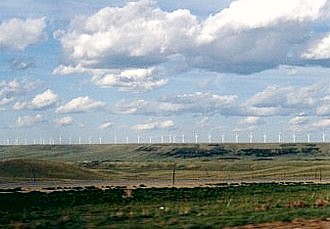 | |
| { The Sue and Jerry Peterson Journal, December 2001 } Sue and Jerry Peterson
SUE'S NOTES: JERRY'S NOTES: SUE'S NOTES: JERRY'S NOTES: SUE'S NOTES: Love to all, [ Jerry and Sue Peterson can be reached in care of this magazine at letters@newyinzer.com. ] | |
 [ From before my birth until the summer of 1998, the Petersons lived in the house across the street from my family's. In 1998, Sue and Jerry—the former, a cigarette-smoking, Baltimore Orioles-loving librarian/airline booking agent; the latter, a fiercely intelligent archeologist/computer whiz—sold their house, bought a pickup truck and recreational vehicle, and took off for the West. Periodically, my parents would receive e-mailed journals updating the Petersons' friends on their various travels and episodes. Written in tag-team, these journals were always entertaining, mixing genuine awe with endearing curmudgeonism and matrimonial bickering. Here, now, is their last journal ever sent. —D.M. ]
[ From before my birth until the summer of 1998, the Petersons lived in the house across the street from my family's. In 1998, Sue and Jerry—the former, a cigarette-smoking, Baltimore Orioles-loving librarian/airline booking agent; the latter, a fiercely intelligent archeologist/computer whiz—sold their house, bought a pickup truck and recreational vehicle, and took off for the West. Periodically, my parents would receive e-mailed journals updating the Petersons' friends on their various travels and episodes. Written in tag-team, these journals were always entertaining, mixing genuine awe with endearing curmudgeonism and matrimonial bickering. Here, now, is their last journal ever sent. —D.M. ]